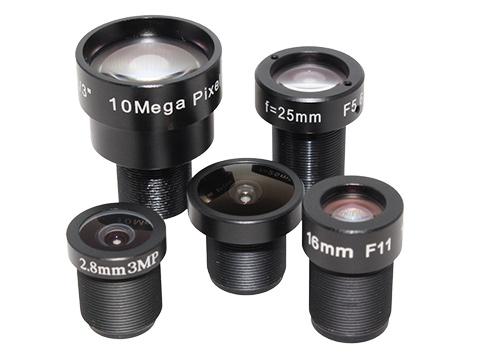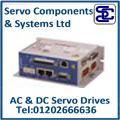
Posted to News on 27th Jan 2023, 14:27
Top trends in industrial cameras and optics
See Scorpion Vision at MachineBuilding.Live, 4 October 2023, on stand 35

Faster and higher-resolution image sensors, interfaces that support ever increasing bandwidths, simpler integration, minIaturisation and high on-board processing power are driving innovation in machine and embedded vision applications. Paul Wilson, managing director of Scorpion Vision, charts the current trends in cameras and components.
Ultra high resolution image sensors: image sensor megapixel counts are continuing to climb, enabling industrial cameras to capture more picture detail. This not only means that microscopic defects can be detected, but also that a single camera can cover a larger area. Applications that have historically required multiple cameras may be carried out using just one high resolution camera, introducing huge potential for cost savings through reduced complexity, processing, management and capital outlay. Using a single camera eliminates the need to stitch together multiple images – driving performance improvements by shortening image processing time.
Larger lenses: the bigger the sensor, the larger the pixel area and the better the image quality…higher resolution sensors go hand in glove with larger lenses if a ‘tunnel effect’ is to be avoided. This is a major consideration when designing machine vision systems, as c-mount lenses are designed for sensors of up to a little more than one inch – anything bigger and a large diameter aperture lens is needed.
Micro lenses: at the opposite end of the lens size spectrum there is a surge in demand for M12 miniature lenses for use in embedded cameras, drones, robotics and autonomous vehicles. One of the reasons for this rise in popularity is that the quality of these lenses has improved dramatically in recent years, enabling them to be deployed in applications that were previously the preserve of c-mount lenses. Miniature lenses can be now incorporated into machine vision cameras, resulting in highly compact systems. This is particularly advantageous where space is at a premium and there is a cost benefit.
Filter application technologies: the use of filters to block out certain bandwidths of light is nothing new in itself, but the technologies for applying filters to industrial cameras are evolving. For example, adapters for M12 lenses are now available that allow ambient light to be filtered out in the same way as with c-mount lenses. This means M12 lenses can be deployed in light sensitive applications, such as in robotics systems for factories where ambient light is constantly changing. The use of filters that only allow light in the near infrared bandwidth is commonly used to mitigate against varying ambient light.
10 GigE protocol: as the successor to GigE, 10GigE provides the same benefits but with a ten-fold increase in data rate and frame rate. To take a step back, historically, machine vision system designers have had a choice of GigE or USB3 as the protocols for transmitting high-speed video and related data over ethernet networks. This decision tended to hinge on the length of cable required, which in turn related to the number of cameras. USB is rated for five metres or less, whereas a GigE interface can function with a cable length up to 100 metres. The trade off with a one GigE interface is speed – a USB3 cable can transmit data five times faster than a One GigE system. The advent of 10GigE will enable the capabilities of high performing image sensors – until now, limited by the bandwidth that could be achieved with the available interfaces – to be realised and exploited.
Embedded vision: these low cost cameras are increasingly infiltrating the industrial world. The main difference between embedded vision and machine vision is that embedded camera technology is far simpler owing to limited data processing capacity. This means it is more suited to gathering data, which is then analysed on a cloud-based platform, than processing online data and making decisions in real-time. There are several examples of embedded cameras being used in a commercial context: in vertical farms they are monitoring and adjusting ambient conditions for optimum plant growth; and in a retail context they are utilised in stock-taking robots.
Stereo vision for the masses: in the past, stereo vision was seen as the domain of experts and required investment in costly software. Now, thanks to the development of low cost stereo vision sensors by companies such as Arducam, cameras can be paired with open source stereo vision AI algorithms and 3D capabilities to create systems that are very proficient at depth sensing – an example might be a robot that navigates its way around a warehouse. The limitations of this technology should be respected though – the hardware isn’t capable of tasks that require accuracy and repeatability, which is the domain of traditional and dedicated machine vision cameras.
Scorpion Vision offers a complete range of industrial cameras and optics, from low cost, low resolution embedded cameras and boards to high resolution cameras with large sensors for more demanding machine vision applications. Scorpion’s expansive catalogue of hardware and software products provides state-of-the-art building blocks for OEMs and system integrators. Scorpion represents Hikrobot, The Imaging Source, Arducam and Hypersen in the UK and Ireland for industrial cameras and other accessories.
Want the latest machine building news straight to your inbox? Become a MachineBuilding member for free today >>


















